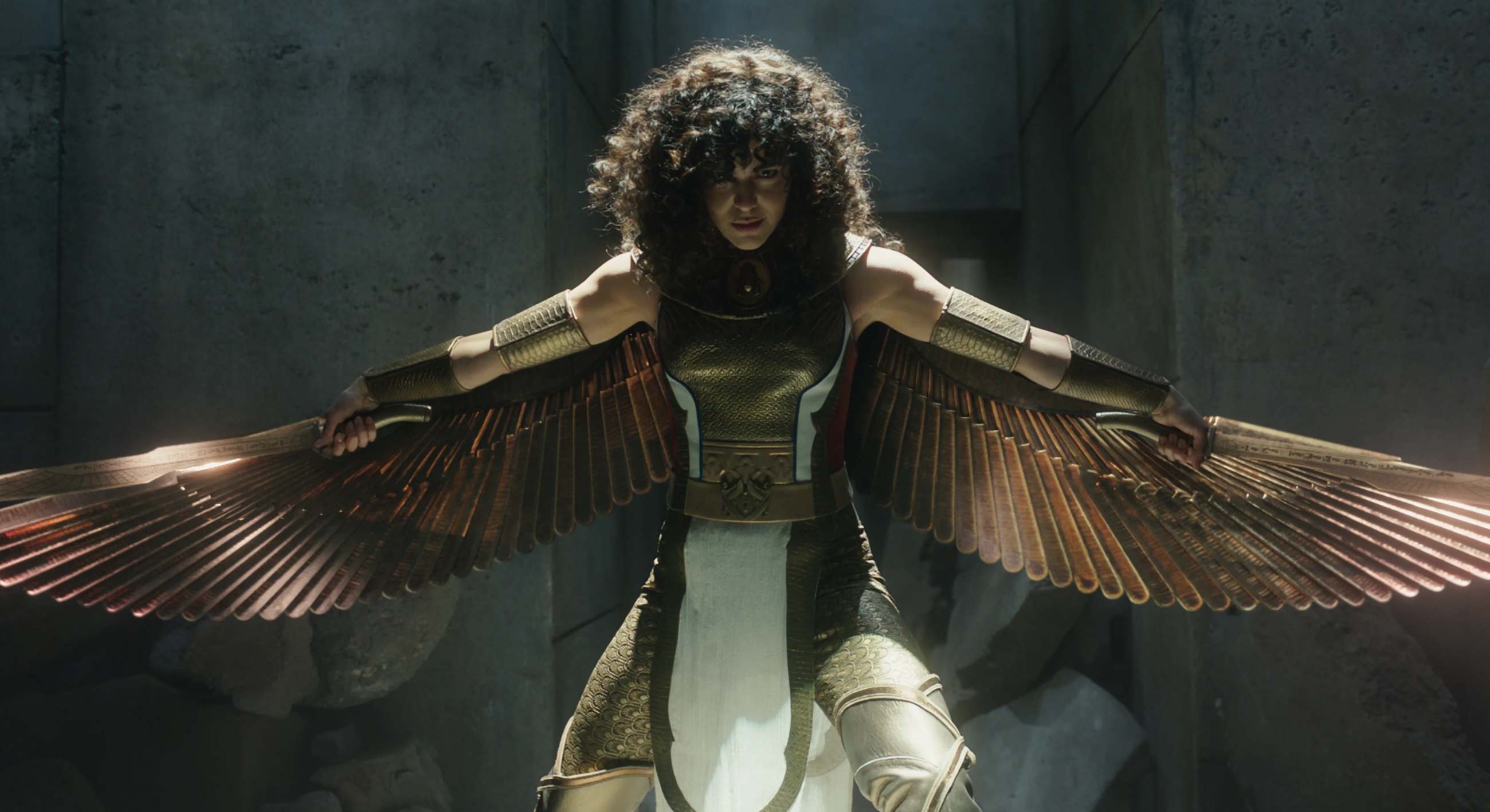Scarlet Scarab: Who is Marvel’s first female Egyptian superhero?

As the sixth episode of Marvel's Moon Knight comes to a close, fans were left astonished by the debut of Scarlet Scarab, the first Egyptian superhero in the Marvel universe.
Layla El-Faouly, played by Egyptian-Palestinian actress May Calamawy, emerged as the Scarlet Scarab in the finale, replete with an epic outfit that included wings hooked to swords on each side.
Layla, the wife of protagonist Marc Spector, had already proven herself as a competent character due to her historical knowledge and ability to collect rare and costly Egyptian artefacts.
Despite initially lacking her husband's god-given abilities, Layla had also shown she was capable of battling supernatural priests, evading crazy cults, and assisting in rescuing the world from the clutches of antagonist Arthur Harrow.
However, with Layla's metamorphosis in the season finale into Scarlet Scarab - an avatar for the ancient Egyptian goddess Taweret - her superhero status finally became official.
New MEE newsletter: Jerusalem Dispatch
Sign up to get the latest insights and analysis on Israel-Palestine, alongside Turkey Unpacked and other MEE newsletters
Marvel confirmed that the character is based on Professor Abdul Faoul, who first appeared in comic books in 1977 as an expert in Egyptian history and the "leader of the Sons of the Scarab, determined to preserve their homeland from foreign rule".
Layla's newfound powers include superhuman strength, durability, and super-fast flying, thanks to an ancient magical artefact known as the "Ruby Scarab".
Her transformation was foreshadowed in earlier episodes when her father dubbed her "Little Scarab" with the actress shown wearing a red scarab embroidered scarf, and a finger badge ornamented with a red scarab beetle.
Representation
Mohammed Diab, the Egyptian director of Moon Knight, shared a side-by-side comparison of Layla after her transformation and a picture of his own daughter. Her curly hair mimics Layla's in the series.
In response to his tweet, fans took to Twitter to comment on their own love and connection for the superhero, who they felt represented them in many ways.
Calamawy spoke about her superhero's significance and the character's hair, stating that “there have been such wonderful posts with girls taking photos of themselves with their curls, writing comments like ‘I’m throwing out my hair straightener'. And that, to me, is what makes me excited more than anything."
Drawing inspiration from the Ancient Egyptian pantheon, Moon Knight has been streaming on Disney+ since 30 March and offers little in the way of tired tropes. Instead, it effectively blends good storytelling, rounded characters, and culturally accurate details.
It follows a man with dissociative identity disorder who suffers from a series of mysterious blackouts, where he cannot recall whole days of his life. Eventually, he learns he is the chosen avatar of the Egyptian god, Khonshu, who has tasked him with stopping a rival deity from returning to Earth.
Moon Knight's Cairo is a realistic reflection of the Arab world's largest metropolis: no filter changes, no exaggerated or inaccurate costume designs, and every extra looks just as they would appear on the streets of the city today.
Middle East Eye delivers independent and unrivalled coverage and analysis of the Middle East, North Africa and beyond. To learn more about republishing this content and the associated fees, please fill out this form. More about MEE can be found here.




